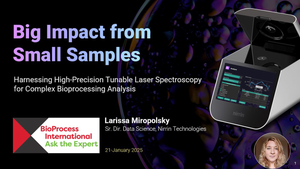
Roche’s subcutaneous Herceptin (trastuzumab) recently became the third product to be approved using Halozyme Therapeutics’s ENHANZE drug delivery tech. However, Halozyme’s royalties have been hit by biosimilar competition.
Halozyme Therapeutics reported what it described as a “strong start to 2019” with revenues of $57 million (€51 million) – up 84% year-on-year – attributed to $30 million upfront license fee from a license agreement struck with argenx in February. That deal gives argenx access to Halozyme’s ENHANZE drug delivery technology to develop subcutaneous product formulations its product candidates.
However, Halozyme’s Q1 suffered from declining royalties – $18 million compared to $21 million – from another partner Roche, which uses the ENHANZE platform in subcutaneous versions of its biologics Rituxan (rituximab) and Herceptin (trastuzumab). The US Food and Drug Administration (FDA) approved the latter in February.

Getting under the skin of biologics delivery. Image: iStock/DmyTo
“Herceptin Hylecta [the subcutaneous trastuzumab brand name] can be administered in two to five minutes compared to 30 to 90 minutes for intravenous Herceptin,” Halozyme CEO Helen Torley said during the financial call.
“Herceptin Hylecta was made available by Roche in April, and we’re delighted that patients now have the option for a much shorter administration time and the associated convenience that can come with it.”
However, as the subcutaneous formulation has come late in Herceptin’s lifecycle, and with biosimilar competition already available in Europe, “during the first quarter, royalty revenues experienced a decline of 14% year over year.” Halozyme had initially projected flat royalties in 2019.
This, Torley said, was mainly driven by lower sales of subcutaneous Herceptin in Europe, partially offset by higher sales of subcutaneous Rituxan versus the prior year quarter.
“Looking ahead, Roche has informed us that they expect lower subcut revenues in 2019 with the decrease primarily attributable to the ongoing impact of biosimliars in Europe and updated expectations on the US launch products. As a result, Halozyme revenue from royalties are now expected to be in the range of $72 million to $74 million in 2019.”
ENHANZE subcutaneous technology
The skin’s subcutaneous space consists of architectural components such as collagen and elastin. Hyaluronan (HA), a naturally occurring glycosaminoglycan, forms a gel like substance with water and helps fill a subcutaneous space between the collagen and elastin. These combine to create resistance to bulk fluid flow in the extracellular matrix which limits large volume subcutaneous delivery.
Halozyme’s technology looks to overcome this by using a proprietary recombinant molecule rHuPH20. The recombinant enzyme works locally to degrade HA in the extracellular matrix at the subcutaneous injection site.
By degrading HA, rHuPH20 enables subcutaneous bulk fluid flow and increases dispersion and absorption of co-administered therapeutics. This may allow delivery of large volumes for rapid subcutaneous injections of approximately two to 20 ml and delivery of even larger subcutaneous infusions of up to 600 ml.
Along with the two Roche products, the ENHANZE technology forms part of Hyqvia [Immune Globulin Infusion 10% (Human) with Recombinant Human Hyaluronidase], a treatment for adult patients with primary immunodeficiency (PI) approved in 2014 and now marketed by Shire/Takeda.
About the Author
You May Also Like

schedl_b_and_w.jpg?width=100&auto=webp&quality=80&disable=upscale)
schedl_b_and_w.jpg?width=400&auto=webp&quality=80&disable=upscale)





